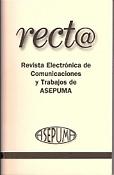Análisis multicriterio del rendimiento del sistema universitario público español: hay vida más allá de los rankings
DOI:
https://doi.org/10.24310/recta.21.2.2020.19890Keywords:
Sistema Universitario P´ublico Espa˜nol, An´alisis multicriterio, Indicadores sint´eticos, Niveles de rendimiento, Ranking de universidadesAbstract
The important role that higher education plays in today’s competitive world market asserts universities as key factors for the country socioeconomic development. In this scenario, some national and international university rankings have become references used for assessing a university reputation. However, most rankings provide either ordinal or numerical results that are difficult to interpret, which leads to incomplete and confusing information. This paper aims to go beyond simply providing a ranking of the Spanish public university system. To this end, we carry out a performance analysis of the Spanish public universities by using a multicriteria analysis technique, based on the Multiple Reference Point based Weak and Strong Composite Indicators (MRP-WSCI). The assessment of universities using the MRP-WSCI approach has two main advantages. First, reference levels are used for each indicator and thus, the scores are easily interpreted as the current position of the university with respect to these levels. Second, composite indicators for different compensation degrees are provided, in such a way that the scores, apart from giving an overall performance measure of the universities, also provide warning signals that let the user detect improvement areas. The analysis has been carried out for each of the three missions of a university system (research, teaching and technology transfer).
Publication Facts
Reviewer profiles N/A
Author statements
Indexed in
-
—
- Academic society
- N/A
- Publisher
- UMA Editorial. Universidad de Málaga
Downloads
Published
How to Cite
Issue
Section
License

This work is licensed under a Creative Commons Attribution-NonCommercial 4.0 International License.






